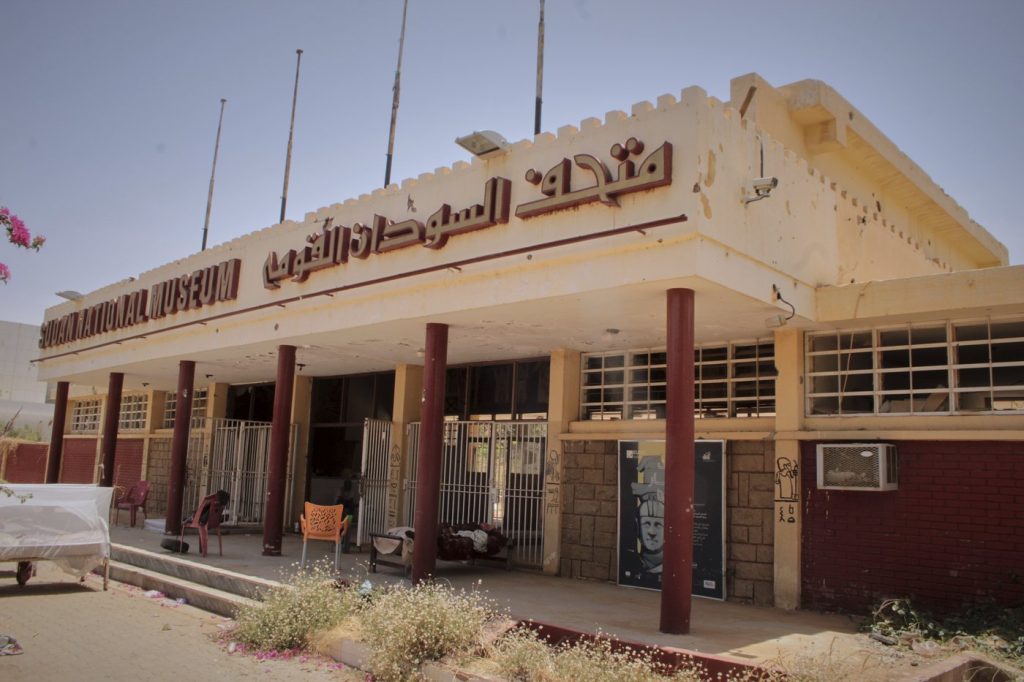CAIRO (AP) - The Sudan National Museum, the largest repository of artifacts from Sudan's rich historical tapestry, stands devastated after two years of warfare. Inside the museum, once vibrant exhibition halls are now strewn with debris, display cases are shattered and empty, and a mummy lies exposed in an open storage box. Authorities report that all gold artifacts have been looted, leaving the museum with an immeasurable loss of cultural heritage.
The destruction is attributed to the paramilitary Rapid Support Forces (RSF), who controlled the district of Khartoum where the museum is located for much of the conflict. With the Sudanese military regaining control of the capital in recent weeks, officials have begun the grim task of assessing the damage inflicted on the museum and its priceless collection, which dates back thousands of years, encompassing the Paleolithic era through to the rise of ancient kingdoms.
According to Gamal ElDeen Zain al-Abdeen, a senior official at the National Corporation for Antiquities and Museums, the scale of loss is profoundly distressing. “The losses are extremely big and saddening. A significant number of antiquities were stolen,” he stated, blaming the RSF for the rampant destruction of Sudan’s heritage. The National Museum housed an impressive array of artifacts, including items from the Napatan era of the eighth and seventh centuries B.C, and pieces from the Meroitic kingdom, known for its pyramids.
Many artifacts too heavy to remove were left behind, such as a line of stone lions and the Colossi of Tabo, which are notable pharaonic-style statues. Also remaining are three ancient temples that were relocated to the museum from northern Sudan in the 1960s to escape the flooding caused by the construction of Egypt's High Dam on Lake Nasser.
However, many significant items have vanished. According to Zain al-Abdeen, looters breached locked storerooms and absconded with all gold artifacts. The full extent of what has been taken remains unclear. The museum was not an isolated victim; Zain al-Abdeen reported that all of Khartoum’s museums suffered damage, particularly the Ethnography Museum, which saw walls demolished and interiors burned.
The looting and destruction of the Sudan National Museum represent not only a cultural tragedy but a setback for the nation’s historical identity, which has often remained in the shadows due to decades of political instability. UNESCO expressed concern in September over the looting, highlighting that the sale or removal of artifacts would lead to the erosion of Sudanese cultural identity and jeopardize the country’s recovery efforts. The organization indicated that museums across Khartoum, River Nile, Northern State, Gezeira, and the Darfur region have experienced extensive damage due to the ongoing violence.
Local residents, such as Sedeeq Mohamed Sedeeq, lamented the situation, stating that while the RSF promised democracy and liberation, their actions are effectively “erasing the oldest nation in history.” Plans for the museum's reconstruction will commence once damage assessments are complete. These plans are anticipated to address necessary building repairs, restoration of antiquity storage areas, and improvements to the museum grounds.
Since the war erupted in April 2023, the human toll has been staggering, with at least 20,000 lives lost and more than 14 million people displaced, exacerbating the humanitarian crisis that has also led parts of the country into famine. The destruction of cultural institutions like the Sudan National Museum underscores the widespread devastation of this conflict and the urgent need for healing and restoration in Sudan.










